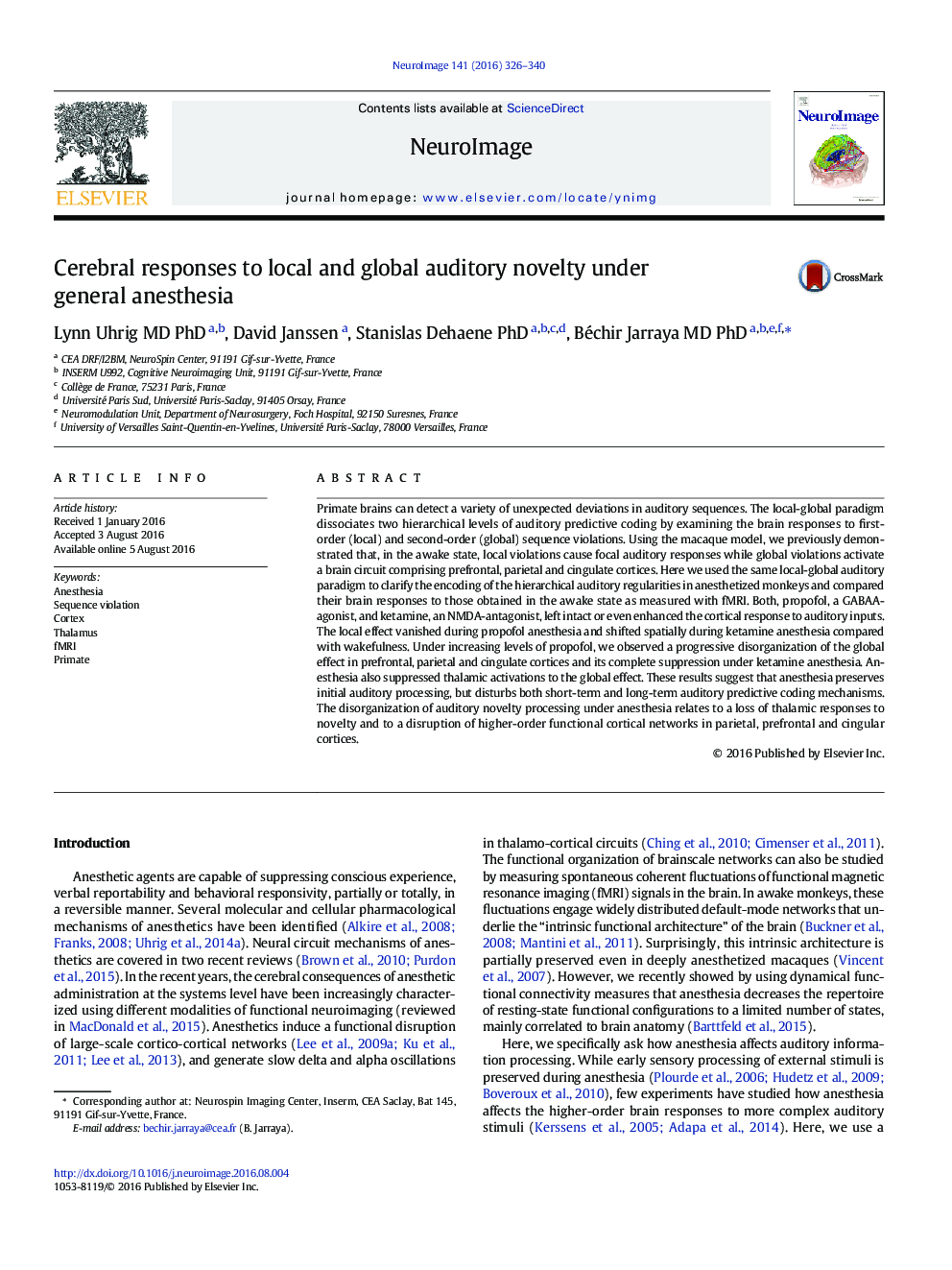| Article ID | Journal | Published Year | Pages | File Type |
|---|---|---|---|---|
| 6023127 | NeuroImage | 2016 | 15 Pages |
â¢Higher orders of auditory novelties activate a fronto-parietal network in awake macaquesâ¢Anesthesia disrupted the fronto-parietal network response to higher orders of auditory noveltiesâ¢The suppression of parietal and thalamic responses to novelty paralleled the anesthesia phenomena
Primate brains can detect a variety of unexpected deviations in auditory sequences. The local-global paradigm dissociates two hierarchical levels of auditory predictive coding by examining the brain responses to first-order (local) and second-order (global) sequence violations. Using the macaque model, we previously demonstrated that, in the awake state, local violations cause focal auditory responses while global violations activate a brain circuit comprising prefrontal, parietal and cingulate cortices. Here we used the same local-global auditory paradigm to clarify the encoding of the hierarchical auditory regularities in anesthetized monkeys and compared their brain responses to those obtained in the awake state as measured with fMRI. Both, propofol, a GABAA-agonist, and ketamine, an NMDA-antagonist, left intact or even enhanced the cortical response to auditory inputs. The local effect vanished during propofol anesthesia and shifted spatially during ketamine anesthesia compared with wakefulness. Under increasing levels of propofol, we observed a progressive disorganization of the global effect in prefrontal, parietal and cingulate cortices and its complete suppression under ketamine anesthesia. Anesthesia also suppressed thalamic activations to the global effect. These results suggest that anesthesia preserves initial auditory processing, but disturbs both short-term and long-term auditory predictive coding mechanisms. The disorganization of auditory novelty processing under anesthesia relates to a loss of thalamic responses to novelty and to a disruption of higher-order functional cortical networks in parietal, prefrontal and cingular cortices.
Graphical abstractDownload high-res image (182KB)Download full-size image
